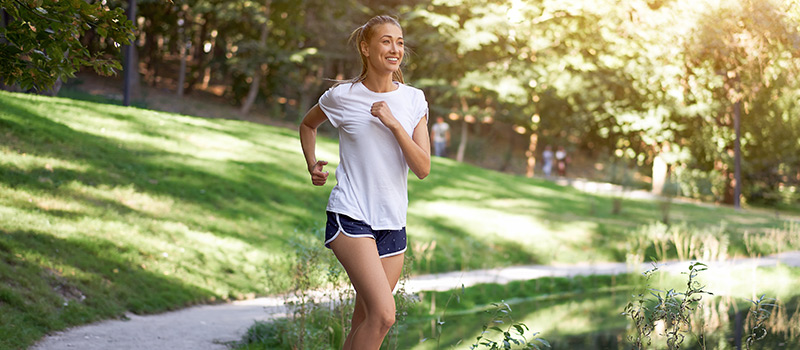It is hard to believe that we have suffered through an entire year of this COVID-19 pandemic, yet here we are. Things are improving of course as numbers are down and continue to decline. The good news about hitting the year mark is that we now know a lot more about the virus and its impacts on health and who is most susceptible to more severe illness.
We have had several questions surrounding COVID-19 and physical activity so I thought this would be a good way to address this issue. I would like to divide our topic today into 2 categories: 1) Fitness and exercise prior to COVID infection and 2) Exercise after having COVID infection.
Will Exercise Help Prevent COVID-19?
Let’s start with physical fitness and its effects on health, in particular as it relates to COVID-19 infection. It turns out that the more physically fit and active you are prior to contracting COVID, the less likely you are to suffer from more severe disease or require hospitalization. I think we could argue that this just makes sense as we know this about fitness and any disease but nevertheless, there is some data that now confirms this. Here is one example:
“ Although the clinical course of COVID-19 illness varies among athletes, (just as it does among non-athletes), on average, physical fitness appears to mitigate the severity of COVID-19 illness. As an example, in a retrospective study of 246 patients (59±12 years, 42 percent male, 75 percent Black) diagnosed with severe acute respiratory syndrome secondary to COVID-19 illness, hospitalization was found to be inversely related to aerobic fitness [4]. Baseline fitness in peak metabolic equivalents, based on exercise stress testing results obtained within the prior four years, were significantly lower among patients who were hospitalized (6.7±2.8) compared with those not hospitalized (8±2.4) (unadjusted odds ratio [OR] 0.83; 95% CI 0.74-0.92; OR adjusted for major risk factors 0.87; 95% CI 0.76-0.99).” Source : UpToDate.com
The practical application here is that if you have not had COVID and are looking for things that you can do to mitigate your risk, look no further than an exercise regimen. Things are more complicated with the pandemic and less access to gyms but that does not mean we should be sedentary.
Spring is here with warmer temperatures and more sunshine so getting outside should be a given for all of us. Walking or jogging daily will improve your fitness and well-being. I will throw in that it will also increase your Vitamin D levels which have also been shown to be inversely related to COVID-19 severity.
You should also mix in some weight training regularly which you can do at home with little to no equipment or at your local gym. If you need some guidance with that please consult a nutrition and fitness expert.
Should I Exercise with COVID-19?
Turning our attention to exercise after COVID-19 infection I will try to answer the questions of when and how much. This advice, like that above, is also pretty intuitive. The research we have points to being able to return to exercise after a week of recovery from symptoms. You want to give your body the time to heal before doing anything too intense or strenuous.
That being said if your symptoms are mild you can certainly get outside and go for a short walk. Once you have given your body time to rest and recover you should ease yourself back into a routine. You should expect that you will not be able to go back 100% right away and this is normal and natural and not a cause for concern.
“A concern among recreational and elite athletes during the COVID-19 pandemic is the impact of detraining. Several studies report that community lockdowns to prevent viral spread have had adverse effects on physical fitness. As an example, a retrospective study of Spanish students enrolled in 16 universities, and involving a total of 13,754 valid survey responses, described reduced moderate (-29.5 percent) and vigorous (-18.3 percent) physical activity during confinement and increased sedentary time (+52.7 percent) [9]. Multiple small, observational cohort studies report comparable declines in fitness among adolescents [10-13]. A small case-control study of children reported a substantial decline in the mean maximum oxygen uptake in a post-COVID-19 cohort compared with pre-pandemic controls (39.1 versus 44.7) [10]. Detraining is an important consideration for clinicians to address when providing guidance about return to play [14].” Source: UpToDate.com
Listen to your body and try to find that balance of pushing hard enough to produce results without pushing too hard to produce injury. If you are having chest pain or severe shortness of breath you should stop and seek a medical evaluation. For the majority of you, I expect you to be back to your pre-COVID workouts within a few weeks of recovery.
I hope this helps clarify any questions you may have about COVID and exercise. As always, if you want to learn more or be evaluated for your personal and individual situation reach out to us for an appointment.
If you are looking for more specific guidance on healthy habits, nutrition or a training regimen let us know and Kathryn Terry, Bianco Primary Care’s Director of Nutrition and Fitness will be happy to help you achieve your health and fitness goals.


